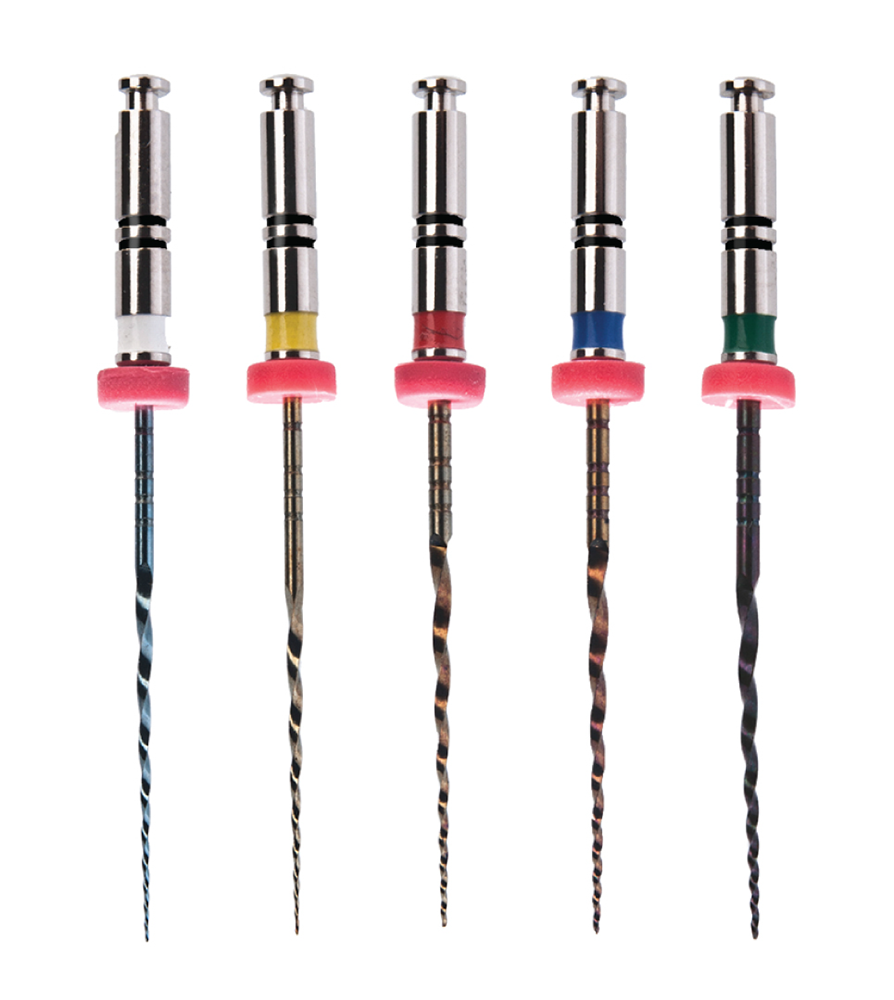Test Drive: This New Endo File System Is Ready for Any Challenge a Root Canal May Present
[Sponsored] Find out what John Flucke, DDS thinks of the Channels® Flex endodontic files from Henry Schein.

As a general dentist who loves a good challenge, I absolutely love endodontics. Don’t get me wrong, I truly love all the procedures I get to do; however, endodontics is my favorite.
When you think about it, endo is one of the few medical procedures done almost exclusively by feel. Now I know microscopes can help. If you ever do a Google search on endodontics, the images that show up will often show the view seen through a microscope, and they are impressive. However, even with all the magnification we have available, there is no current technique that lets us truly see what we are doing.
That’s what makes endodontics so fascinating to me. Each case is unique and as such requires the doctor to have a “feel” for the case and the instrumentation. Performing endodontic therapy is like a puzzle, and it is so much fun to decipher the canal anatomy every time. Our choice of instrumentation is so important, which is why I’m excited to let you know about a product test drive I recently completed on the Channels® Flex line of endodontic instruments, which are exclusively available by Henry Schein.
Anytime I evaluate endodontic files, I bench test them first. I have a big supply of acrylic practice blocks, and I like to use them to push files to their limits and see what it takes to make a mistake. I’d much rather discover file limitations in an acrylic block than a patient’s first molar. What I have discovered in both acrylic blocks and patient procedures is that the Channels® Flex files perform very well.
The files come in 2 taper choices: .04 and .06. In most cases, I have found that is all that is needed. They are made of industry-leading nickel titanium. Nitinol, as it is known in metallurgy, is an amazing metal that was originally discovered in 1959 at the Naval Ordnance Laboratory as part of research into making better missile nose cones. When someone tells you these endodontic files are “space age,” they mean it. Interestingly, the technology to easily manufacture the material was not developed until the 1980s.
The flute design and taper of a rotary file have a distinct effect on how a file handles the confined spaces of the canal system. And in my hands, the Channels® Flex instruments have exhibited superior strength and an amazing amount of flexibility.
There is a Zen quality to correct endodontic instrumentation. The doctor needs files that cut efficiently but are not overly aggressive, along with files that are flexible but resistant to fracture. No one, doctor or patient, wants root canals to take longer; however, files that work quickly can’t remove too much tooth structure or they will be weakening the tooth in the process of treating. I felt the Channels® Flex files were correctly located in the “Goldilocks zone” of being just right.
When testing on acrylic blocks, I like to really force a file to see whether I can find its weaknesses. And I am happy to say that, despite my best efforts at trying to do so, not 1 file broke. This is a tremendous testament to the strength and durability of these instruments. One of the cardinal rules of endodontic instrumentation is to never force a file. However, during testing, that is exactly what I do to understand just how much abuse a file can take before a catastrophic failure occurs. I’m not saying these files won’t break, but I am saying you must try to do so.
One of the great things about the flexibility of these files is that they allow you to navigate a canal’s natural shape without concerns for bounce back, which is common with some other systems on the market. The company claims the files can negotiate 90º curves, and although I did not have the opportunity to see that firsthand, my experience has given me no reason to doubt those claims.
The .04 taper is available in sizes 15 to 60, and the .06 taper is available in sizes 15 to 50. They are also color coded to match the colors of ISO hand files to make them easily identifiable and easy to sequence. The taper is easy to determine by stripes on the instrument handle. Two stripes indicate .04 taper, and 3 stripes indicate .06 taper.
In my opinion, one of the best developments we’ve seen in obturation in the past few years is the creation of precisely molded gutta-percha cones that correspond to file diameter and taper. Channels® Flex files take advantage of this enhanced manufacturing technique to supply their corresponding gutta-percha points that are created to fit perfectly into the canal after instrumentation. There are also perfectly sized paper points to use.
The Channels® Flex files performed very well in my hands. They were easy to use, negotiated tricky canal anatomy reliably, and removed dentin efficiently without being overly aggressive. I liked that these files were designed to help the doctor successfully instrument most cases without forcing the user to learn an entirely new instrumentation technique. After my normal bench testing, I began clinical implementation with no concerns about how the files would perform.
As a general dentist who performs a lot of endodontic treatments, I’ve found the Channels® Flex complete line of files, paper points, and gutta-percha points to be easy and reliable to use. If you are looking for a way to improve your endodontic outcomes or to just make the procedure easier, you must check them out. They are available to order from Henry Schein.
